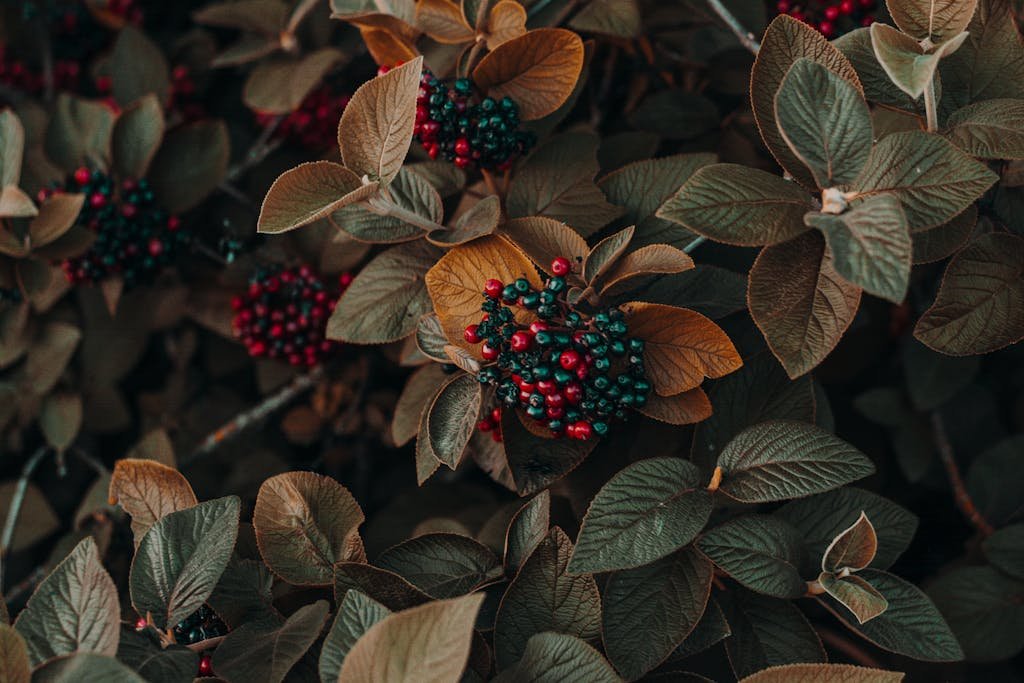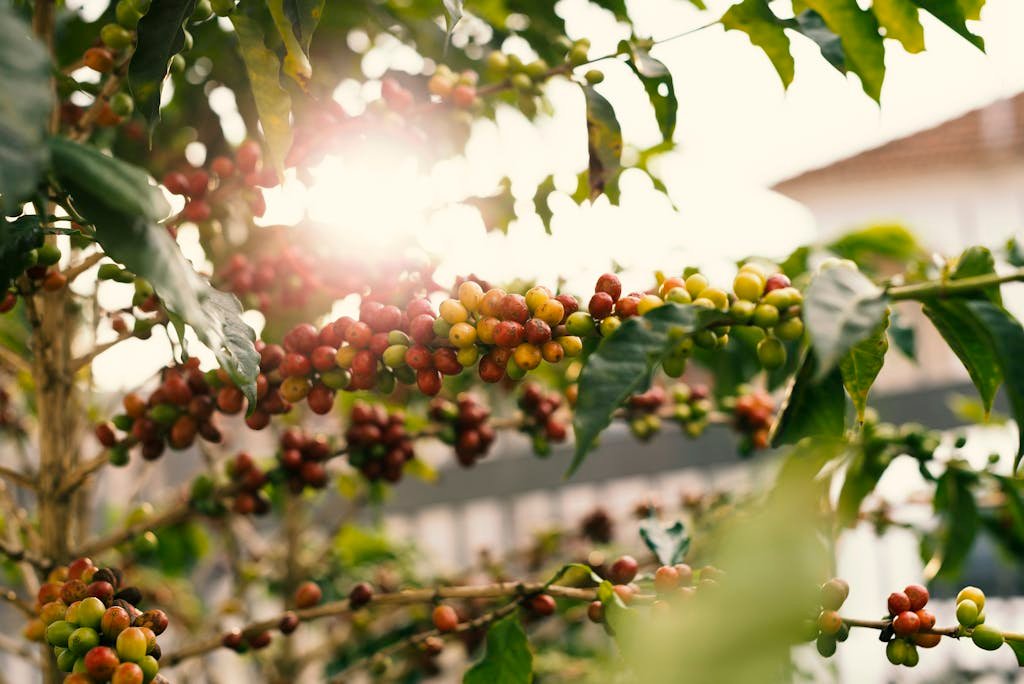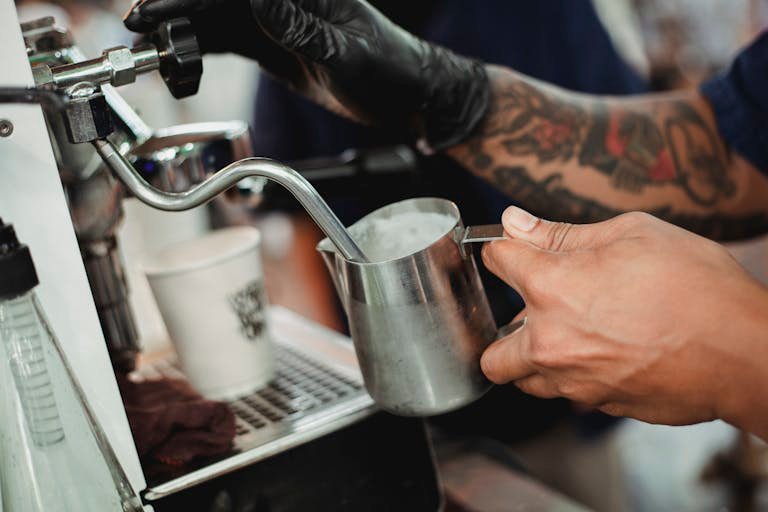Have you ever wondered what a coffee plant looks like? I remember the first time I encountered one. It was during a trip to a beautiful coffee plantation in Costa Rica, that I saw those lush green leaves and vibrant cherries up close. If you’re like me, and your love for coffee extends beyond the cup, then you’re in the right place. Let’s explore the fascinating world of coffee plants together.
Coffee Plant Basics

What is a Coffee Plant?
A coffee plant is not just any plant; it’s a member of the Rubiaceae family, known for its aromatic beans that fuel our mornings. Native to tropical regions like Africa, Asia, and Latin America, the coffee plant thrives in warm, humid conditions with rich, well-drained soil.
Anatomy of a Coffee Plant
Understanding the anatomy of a coffee plant can deepen your appreciation for each cup of coffee. The coffee plant has a complex structure that includes roots, stems, leaves, flowers, and fruit (coffee cherries). Each part plays a crucial role in the plant’s growth and the quality of coffee it produces.
Ideal Growing Conditions
Coffee plants prefer a balanced climate, with temperatures between 60-70°F (15-24°C) and annual rainfall between 40-100 inches. They thrive in shaded environments, often growing under the canopy of taller trees, which protect them from direct sunlight and help maintain soil moisture.
Coffee Plant Life Cycle

Germination and Seedling Development
The life of a coffee plant begins with a seed. Germination takes place in a controlled environment, where seeds sprout into seedlings. This stage requires optimal moisture and temperature to ensure healthy growth.
Growth and Maturation
Once the seedlings are strong enough, they are transplanted into the field. The growth phase lasts several years, during which the plant develops its root system, leaves, and branches. Regular pruning helps shape the plant and encourages the growth of new shoots.
Flowering and Pollination
Coffee plants bloom with fragrant white flowers, typically once a year. These blossoms are crucial for pollination, which can occur naturally or through human intervention. Successful pollination leads to the development of coffee cherries.
Fruit Development and Ripening
After pollination, the coffee cherries begin to form. They start as green, unripe fruits and gradually turn red, yellow, or orange, depending on the variety. This ripening process can take several months, during which the cherries accumulate sugars and develop their unique flavors.
Harvesting and Processing
The final stage in the coffee plant’s life cycle is the harvest. Farmers pick the ripe cherries by hand or using machinery. The cherries then undergo various processing methods to extract the coffee beans, which are dried, roasted, and eventually brewed into your favorite cup of coffee.
Exploring Coffee Plant Varieties

Arabica vs. Robusta
There are two primary species of coffee plants grown for commercial use: Arabica and Robusta. Arabica coffee is known for its sweet, complex flavors and lower caffeine content, while Robusta coffee is more robust and bitter, with higher caffeine levels.
Unique Coffee Varieties
Beyond Arabica and Robusta, there are lesser-known varieties like Liberica and Excelsa. Each variety has distinct characteristics, from flavor profiles to growing conditions. Exploring these unique types can broaden your coffee horizons.
Cultivar Differences and Their Impact on Flavor
Within each coffee species, there are numerous cultivars or sub-varieties. These cultivars are bred for specific traits, such as disease resistance or flavor enhancement. Understanding cultivar differences can help you appreciate the complexity of coffee flavor profiles.
Read Also: Oat Milk Coffee: The Creamy, Plant-Based Upgrade
Practical Tips for Growing Coffee Plants at Home

Ideal Growing Conditions for Home Gardeners
Growing coffee at home can be a rewarding experience. To succeed, you’ll need to replicate the plant’s natural environment as closely as possible. Ensure your coffee plant receives bright, indirect light, consistent moisture, and a stable temperature.
Pruning and Maintenance
Regular pruning is essential for maintaining a healthy coffee plant. Remove dead or damaged branches, and trim new growth to encourage a bushier shape. This practice helps the plant focus its energy on producing high-quality cherries.
Harvesting and Enjoying Your Homegrown Coffee
If you’re patient and diligent, you’ll eventually be rewarded with homegrown coffee cherries. Harvest them when they’re ripe, and experiment with processing and roasting techniques to create your unique blend.
Common Coffee Plant Diseases and Pests

Identifying and Preventing Leaf Rust
Leaf rust is a common fungal disease that affects coffee plants, causing orange spots on the leaves. To prevent leaf rust, ensure proper air circulation around your plants and avoid overwatering.
Tackling Coffee Berry Borer Infestations
The coffee berry borer is a small beetle that burrows into coffee cherries, damaging the beans. Regular monitoring and the use of natural predators or insecticides can help control infestations.
Managing Root-Knot Nematodes
Root-knot nematodes are microscopic worms that attack the plant’s roots, causing stunted growth and reduced yields. Crop rotation and soil solarization are effective methods for managing these pests.
Propagating Coffee Plants from Cuttings and Seeds

Growing Coffee from Seeds
Start by soaking coffee seeds in water overnight. Plant them in a well-draining soil mix and keep the soil consistently moist. Germination can take several weeks, so be patient.
Propagating Coffee Plants from Cuttings
Take a healthy cutting from a mature coffee plant, ensuring it has at least two nodes. Dip the cut end in rooting hormone, plant it in a suitable medium, and keep it in a humid environment until roots develop.
Caring for Young Coffee Plants
Once your coffee cuttings or seedlings have established roots, transplant them into larger pots. Provide them with the right conditions and care to ensure healthy growth.
The Coffee Plant’s Ecological Role

Promoting Biodiversity
Coffee plantations can support diverse ecosystems by providing habitat for various plant and animal species. Shade-grown coffee, in particular, fosters a healthy environment for wildlife.
Improving Soil Health
Coffee plants contribute to soil health by adding organic matter through leaf litter and root decomposition. This process enhances soil fertility and structure.
Mitigating Climate Change
Growing coffee plants can help combat climate change by sequestering carbon dioxide from the atmosphere. Sustainable coffee farming practices further reduce the environmental impact.
Why Coffee Enthusiasts Should Appreciate the Coffee Plant

Understanding the Coffee Plant’s Journey
By learning about the coffee plant’s life cycle and cultivation, you can develop a deeper appreciation for the effort that goes into every cup of coffee.
Supporting Sustainable Coffee Practices
Choose coffee from producers who prioritize sustainable and ethical farming practices. Your support can make a significant difference in preserving the environment and improving the livelihoods of farmers.
Engaging with the Coffee Community
Join local or online coffee communities to share your passion for coffee and learn from others. Engaging with fellow enthusiasts can enrich your coffee experience.
Read Also: Brew Perfection: Your Guide to Filter Coffee
Conclusion
The coffee plant is a remarkable organism with a rich history and vital ecological role. By understanding its life cycle, varieties, and cultivation requirements, you can develop a newfound appreciation for your daily brew. Whether you’re a coffee enthusiast, home gardener, or environmentalist, there’s always more to learn and explore about the coffee plant.






